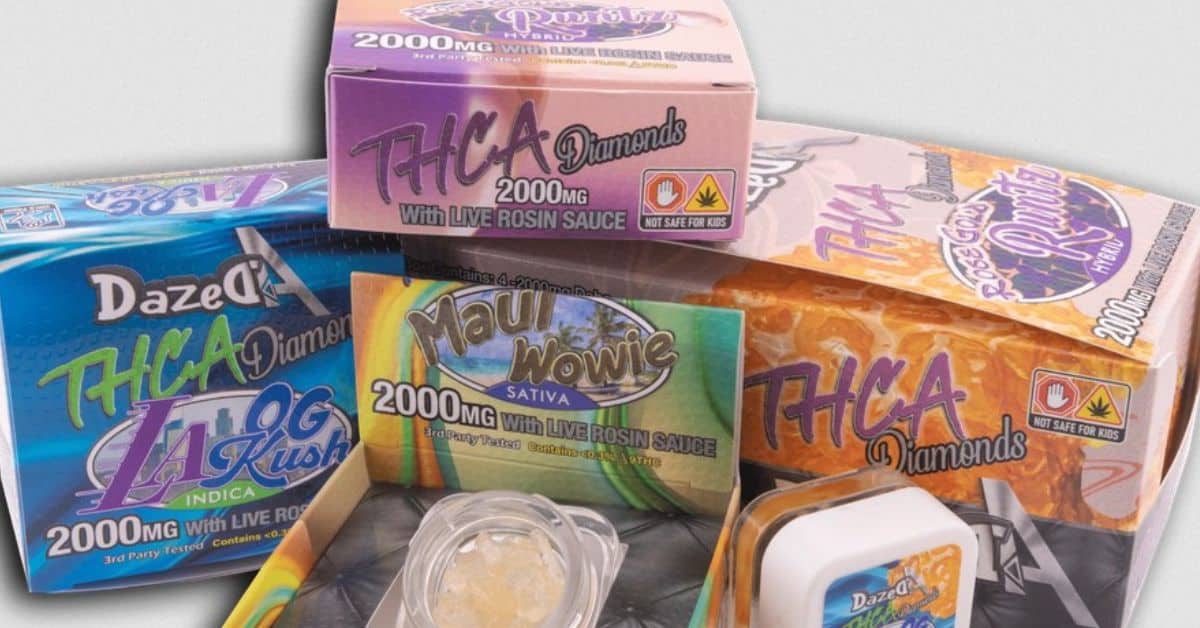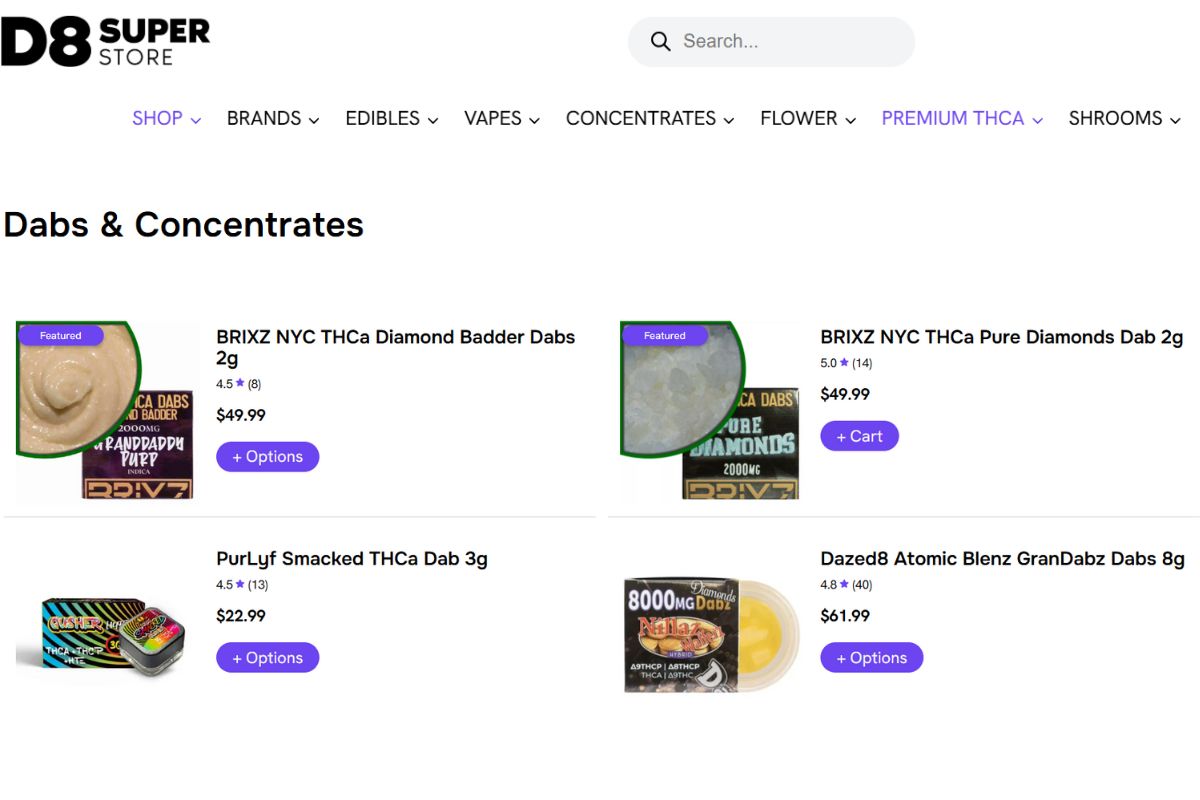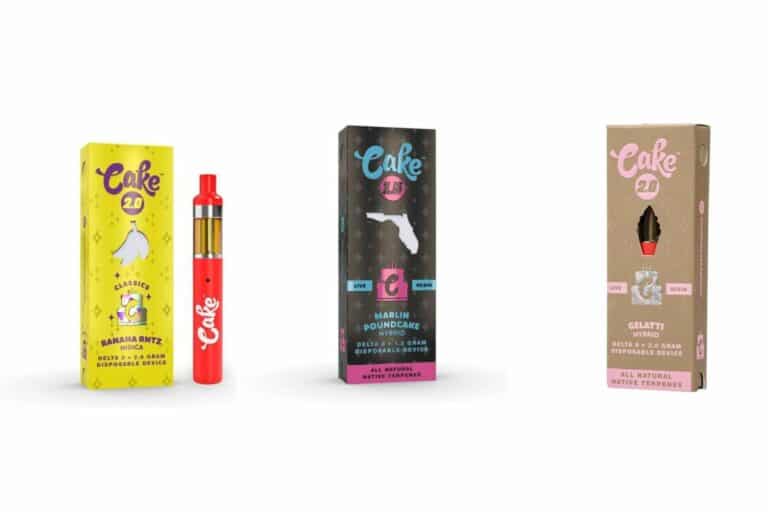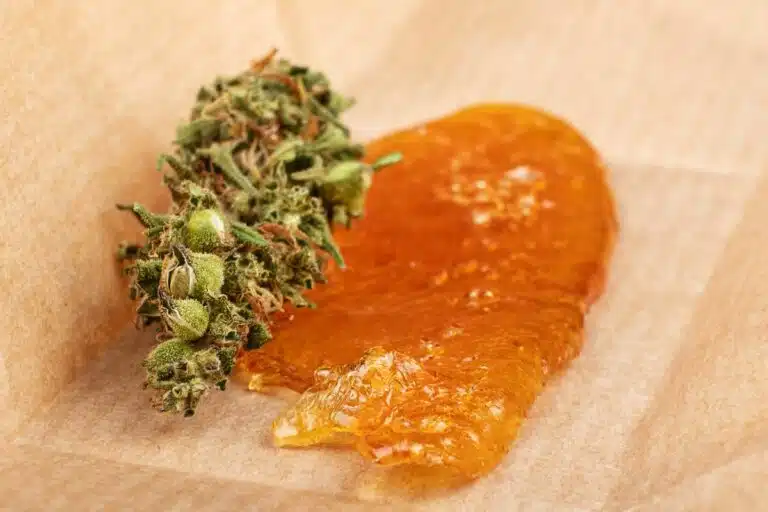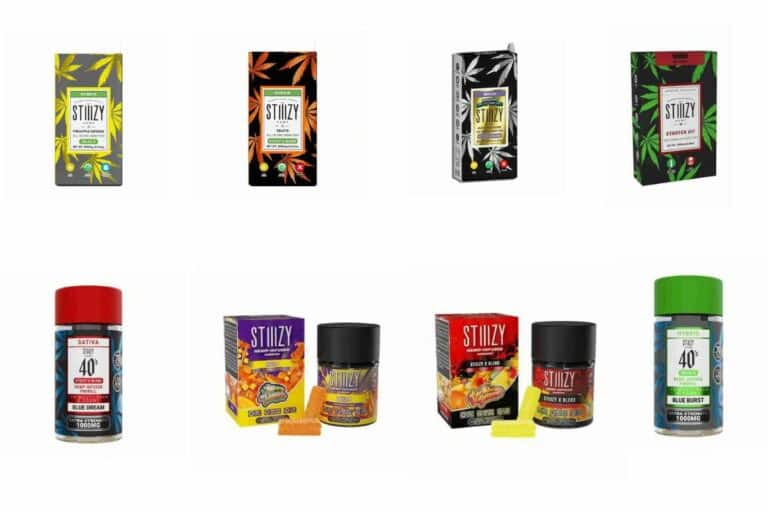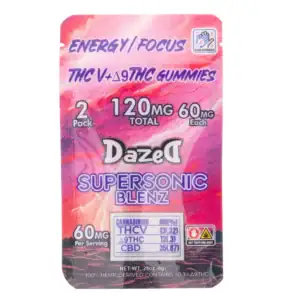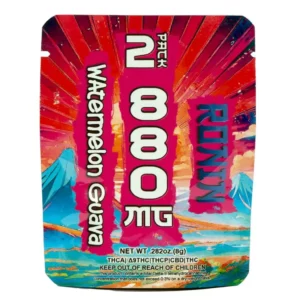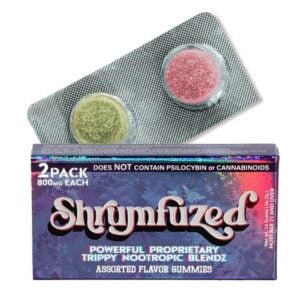What Are THCA Dabs? A Guide to Types, Benefits, and Usage
What is THCA?
Definition of Tetrahydrocannabinolic Acid (THCA)
- Tetrahydrocannabinolic acid (THCA) is a non-psychoactive compound found in the cannabis plant.
- It is the precursor to THC, the psychoactive compound responsible for the “high” associated with cannabis.
- THCA is converted to THC through decarboxylation, a process triggered by heat.
Chemistry Behind THCA
- THCA is synthesized in the trichomes of the cannabis plant through enzymatic processes.
- It is relatively stable in its natural state but can convert to THC over time, especially when exposed to heat, light, and air.
- Understanding the chemical structure of THCA is crucial for appreciating its role in the cannabis experience.
THCA Concentrates
Types of THCA Concentrates
THCA Diamonds
- THCA diamonds are crystalline concentrates that boast exceptionally high purity and potency.
- Often exceeding 99% potency, THCA diamonds deliver a clean, intense high when heated and converted into THC.
- These glass-like crystals can be dabbed, sprinkled onto flower, used to make edibles, and used in other ways for a powerful, fast-acting experience.
THCA Wax
- THCA wax is a soft, pliable concentrate that has a buttery, easy-to-handle texture.
- Its rich terpene content and high THCA potency ensure a flavorful, aromatic experience.
- Best used with a dab rig or vaporizer, THCA wax melts smoothly under heat, producing potent and fast-acting effects.
THCA Sugar Wax
- THCA sugar wax is a soft, granular concentrate that closely resembles traditional wax but has a sugary, crystallized texture.
- THCA sugar wax can be white, but it often has an amber color due to high terpene content.
- Sugar wax offers high THCA potency combined with a full-spectrum cannabinoid profile, making it a flavorful and effective option for dabbing.
THCA Shatter
- THCA shatter is a brittle, glass-like concentrate that breaks apart easily, making it convenient for precise dosing.
- With its high THCA content, shatter offers a potent experience and can be dabbed, broken up and added to pre-rolls, or inhaled using a bong rig.
- When heated, it melts into a clean, flavorful vapor, delivering strong psychoactive effects after decarboxylation.
THCA Sauce
- THCA sauce is a rich, terpene-heavy concentrate known for its high potency and bold flavors.
- It contains a mix of THCA crystalline structures and cannabinoid-rich oil, providing a thick, saucy texture that’s ideal for dabbing.
- THCA sauce delivers strong effects alongside a full-spectrum terpene experience, making it a favorite for flavor chasers and connoisseurs.
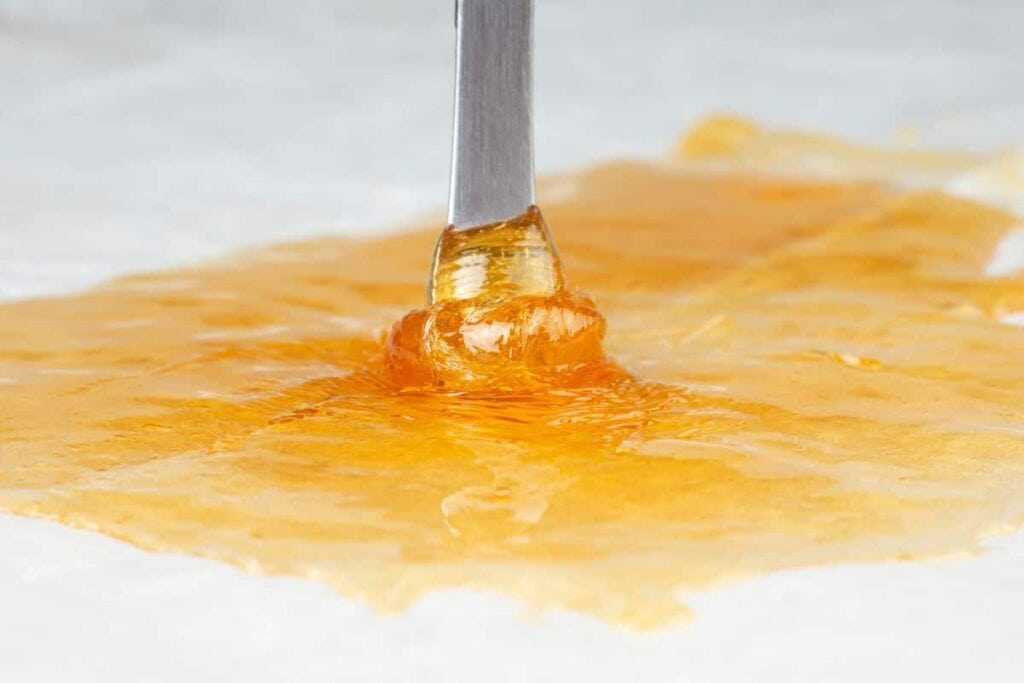
THCA Badder
- THCA badder is a whipped, creamy concentrate with a smooth, malleable texture that makes it easy to scoop and handle.
- Known for its high terpene content and potent THCA levels, badder provides a rich, flavorful dabbing experience.
- It’s ideal if you prefer concentrates that are easy to work with while still offering strong effects and full-spectrum benefits.
THCA Live Resin
- THCA live resin is an ultra-premium concentrate extracted from fresh, flash-frozen cannabis, preserving the plant’s full spectrum of cannabinoids and terpenes.
- This process results in exceptional flavor, potency, and aroma, offering a rich, well-rounded experience.
- Live resin is favored for dabbing due to its high THCA content and terpene-forward profile, delivering a smooth and flavorful vapor when heated.
THCA Live Rosin
- THCA live rosin is a solventless concentrate made using heat and pressure, ensuring a pure, terpene-rich experience without chemical solvents.
- This premium extract offers a clean, natural flavor while maintaining high THCA potency.
- Ideal for dab enthusiasts, live rosin provides a smooth, flavorful vapor with strong effects, making it a top choice for connoisseurs who prioritize purity and taste.
Benefits of THCA
| Benefit | Description |
|---|---|
| Anti-Inflammatory | Helps reduce inflammation, which may support conditions like arthritis. |
| Neuroprotective Properties | May protect brain cells and support neurological health. |
| Anti-Nausea Effects | Can help reduce nausea and appetite loss, especially in clinical settings. |
| Anti-Proliferative | Shows potential in slowing the growth of certain cancer cells (under research). |
| Non-Psychoactive | Offers therapeutic effects without the “high” of THC. |
| Supports Immune Function | May help regulate immune responses in the body. |
| Pain Relief | Can assist in managing chronic and inflammatory pain. |
| Antioxidant | Fights oxidative stress and supports cellular health. |
| Digestive Health | May soothe the digestive system and reduce discomfort. |
| Potential Mood Support | Early resear |
Potential Health Benefits
Anti-Inflammatory Effects
- Research suggests that THCA may have anti-inflammatory properties, making it a potential therapeutic option for various medical conditions.
- THCA has been studied for its anti-nausea effects, showing potential in reducing symptoms without psychoactive impact.
- More research is needed to fully understand the benefits of THCA, but current findings suggest its potential as a therapeutic compound.
THCA Benefits for Cannabis Users
- THCA dabs offer a cleaner and more precise dosing experience than other types of THCA products.
- They provide a potent and fast-acting experience, making them ideal for therapeutic support or recreational fun.
- THCA dabs are a convenient and potent way to consume THCA, offering a unique experience for cannabis connoisseurs.
Effects of THCA

Relaxation and Euphoria
- THCA wax is known for its ability to induce deep relaxation and euphoria.
- When THCA is decarboxylated into THC, it interacts with the endocannabinoid system, particularly the CB1 receptors in the brain.
- This interaction helps to reduce stress and anxiety, promoting a sense of calm and tranquility.
Appetite Stimulation
- Cannabis is famously known for its ability to stimulate appetite, and THCA wax is no exception.
- When consumed, the THC produced from THCA interacts with the brain’s hypothalamus, which regulates hunger.
- This effect, commonly referred to as “the munchies,” can be particularly beneficial for individuals who suffer from conditions that suppress appetite.
Creativity and Focus
- Many users report that THCA wax enhances their creativity and focus.
- The psychoactive effects of THC can alter perception and cognition, often leading to new and imaginative ways of thinking.
- This can be particularly useful for artists, writers, and other creative professionals who may seek to break through creative blocks or find inspiration.
How to Use THCA Dab
| Step | Description |
|---|---|
| 1. Gather Your Tools | You’ll need a dab rig, dab tool, torch (or e-rig), and a carb cap. |
| 2. Prepare the Dab | Use a dab tool to pick up a small amount of THCA concentrate. |
| 3. Heat the Nail/Banger | Use a torch to heat the nail or banger until it’s red-hot (or use an e-nail). |
| 4. Cool the Nail | Let it cool for 30–60 seconds to reach the optimal dabbing temperature. |
| 5. Apply the Dab | Place the THCA on the nail/banger and inhale slowly through the rig. |
| 6. Cap It | Use the carb cap to trap heat and control airflow for better vaporization. |
| 7. Inhale and Exhale | Inhale steadily, then exhale and relax as effects begin to set in. |
| 8. Clean the Banger | After each dab, wipe the nail clean with a Q-tip to maintain flavor and function. |
Dabbing THCA Concentrates
- Dabbing is the most popular and efficient method for consuming THCA wax.
- It involves using a dab rig, which is a specialized pipe designed for vaporizing concentrates.
- The rig features a nail or banger that is heated with a torch to high temperatures.
Vaporizing THCA Wax
- Vaporizing THCA wax can be done using portable vaporizers designed for concentrates.
- These devices offer a convenient and discreet way to consume THCA wax without the need for a torch or rig.
- Vaporizers heat the wax to a temperature that decarboxylates the THCA without burning it.
Adding to Joints or Bowls
- THCA wax can be added to joints or bowls for an extra kick.
- When the joint or bowl is lit, the heat decarboxylates the THCA, converting it into THC and enhancing the overall potency of the smoke.
Edibles and Infusions
- THCA wax can be used to make edibles, provided it undergoes decarboxylation first.
- This can be done by gently heating the wax in an oven before incorporating it into recipes.
- Edibles made with THCA wax can provide potent and sustained relief.
Legality and Safety

Federal and State Laws
- THCA dabs are federally legal under the 2018 Farm Bill, which defines hemp as any cannabis plant containing less than 0.3% THC.
- However, state laws may vary and restrict or ban THCA products.
Precautions and Contraindications
- Potential side effects of THCA dabs may include dizziness, lightheadedness, anxiety, and headaches.
- It is essential to consume THCA dabs responsibly and in moderation, especially for inexperienced users.
Where to Buy THCA Dabs Online
Reputable Online Retailers
- Look for online retailers that offer high-quality THCA dabs and provide lab testing and certification.
- Reputable retailers will also have a clear and transparent return policy.
Quality Control and Testing
- Ensure that the THCA dabs you purchase have undergone rigorous testing for potency, purity, and contaminants.
- Look for products that have been tested by third-party labs and have a clear label indicating the THC and THCA content.
THC Concentrates vs. THCA Concentrates
| Feature | THC Concentrates | THCA Concentrates |
|---|---|---|
| Main Compound | Delta-9 THC | Tetrahydrocannabinolic Acid (THCA) |
| Psychoactive? | Yes | No (until heated) |
| Requires Decarboxylation? | Already active | Yes, must be heated to convert to THC |
| Usage Method | Smoked, vaped, dabbed, or infused in edibles | Typically dabbed or vaporized to activate |
| Medical Benefits | Pain relief, appetite stimulation, euphoria | Anti-inflammatory, neuroprotective (non-psychoactive uses) |
| Common Forms | Wax, shatter, live resin, distillate | THCA diamonds, raw extract |
| Shelf Stability | Stable in active form | Must be kept cool to prevent THC conversion over time |
| Legal Considerations | Regulated as a psychoactive substance | Legal in more regions when not decarboxylated |
Key Differences and Similarities
- THC concentrates are psychoactive, while THCA concentrates are non-psychoactive in their raw form.
- Both types of concentrates offer a potent and fast-acting experience, but THCA concentrates require decarboxylation to produce psychoactive effects.
Conclusion
Final Thoughts on THCA Dabs
- THCA dabs offer a unique and potent experience for cannabis connoisseurs.
- With their high THCA content and various forms, THCA dabs cater to different preferences and needs.
- Whether you’re looking for a recreational or therapeutic experience, THCA dabs are definitely worth trying.

